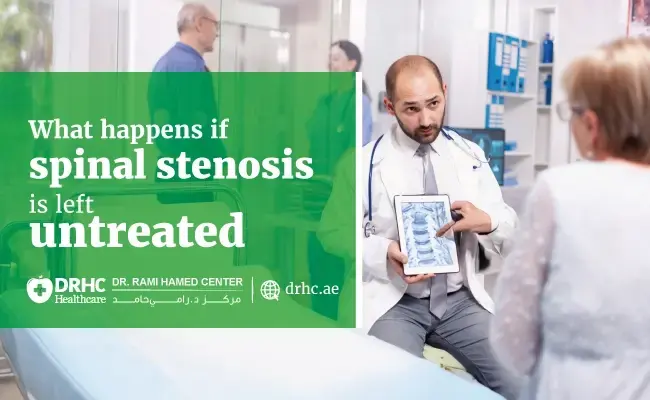
If you've been living with persistent lower back pain, you're not alone. It’s one of the most common complaints we see at Dr. Rami Hamed Center (DRHC) in Dubai. But not all back pain is created equal. In fact, one often-missed cause of low back pain is sacroiliac (SI) joint dysfunction—a condition that can feel nearly identical to traditional lumbar spine issues.
We understand how frustrating it is to try multiple treatments without lasting relief. If that sounds familiar, it might be time to consider whether your SI joint is the real culprit.
What Is the Sacroiliac Joint?
The sacroiliac joints are located where your spine meets your pelvis—one on each side. These joints act like shock absorbers, transferring weight between your upper body and legs. Unlike the flexible joints in your limbs, the SI joints allow only limited movement, but they play a critical role in maintaining stability.
Sacroiliac joint dysfunction happens when there is too much or too little movement in these joints, leading to inflammation, pain, and often, misdiagnosis.
Why It’s Mistaken for Low Back Pain
SI joint dysfunction can produce symptoms that mimic common lumbar spine conditions like herniated discs, sciatica, or muscle strain. This can lead to confusion, delayed diagnosis, and ineffective treatment.
Common symptoms include:
- Pain on one side of the lower back or buttocks
- Discomfort that worsens with prolonged sitting, standing, or climbing stairs
- Pain that radiates to the thigh (but rarely past the knee)
- Stiffness or instability in the pelvis
Because these symptoms are so similar to other back conditions, accurate diagnosis requires a careful physical examination, detailed history, and sometimes specialized imaging or diagnostic injections.
Explore Our Related Blogs
- How spinal stenosis causes neurogenic claudication
- What causes spinal cord compression in cervical spondylosis
- How untreated spondylolisthesis leads to nerve damage
- How degenerative disc disease progresses to facet joint arthritis
Frequently Asked Questions (FAQs)
Q: How is SI joint dysfunction diagnosed?
A thorough physical examination is the first step. Your doctor may use specific movements to provoke symptoms in the SI joint. If needed, imaging studies like X-rays or MRIs may be ordered. In some cases, an SI joint injection with local anesthetic helps confirm the diagnosis—if your pain temporarily improves, it likely originates from the joint.
Q: Can it heal on its own?
Mild cases may improve with rest, physical therapy, and anti-inflammatory medications. However, if the underlying dysfunction isn’t addressed, the pain may return or worsen.
Q: What are the treatment options?
At DRHC Dubai, we offer a range of conservative and advanced treatments, including:
- Targeted physical therapy
- Postural correction and strengthening exercises
- Anti-inflammatory medications
- SI joint injections (for both diagnosis and pain relief)
- Minimally invasive SI joint fusion, in select cases where conservative treatment fails
Q: Will I need surgery?
Surgery is rarely the first option. We only recommend it when non-surgical treatments haven’t worked and the pain significantly interferes with daily life. Our team will guide you through the safest, most effective treatment plan tailored to your condition.
Q: How long does recovery take?
Recovery depends on the severity of the condition and the treatment chosen. Many patients experience improvement within weeks of starting physical therapy or after receiving an injection. Surgical recovery may take a few months, but many people report lasting relief and improved mobility.
When to See a Specialist
If you've been treated for lower back pain without improvement—or if your symptoms seem to move from your lower back to your hips or thighs—it may be time to evaluate your sacroiliac joints. Early diagnosis leads to better outcomes and helps avoid unnecessary treatments.
At Dr. Rami Hamed Center (DRHC) in Dubai, our spine and orthopedic specialists are experienced in diagnosing and managing SI joint dysfunction. We use a patient-focused approach that combines advanced diagnostics with compassionate care, always striving for the least invasive and most effective treatment possible.
Conclusion: Don't Let the Wrong Diagnosis Delay Your Recovery
Back pain can be physically and emotionally draining, especially when the root cause remains unidentified. Sacroiliac joint dysfunction is often overlooked, but with the right diagnosis and treatment, it’s highly manageable.
If you're struggling with stubborn low back pain, consider a consultation at DRHC Dubai. Our multidisciplinary team is here to help you find clarity, comfort, and a personalized path to recovery.
Dr. Rami Hamed
Consultant Spine & Orthopedic Surgeon
Founder, DRHC – Dubai Healthcare City
📞 +971 4 279 8800
🌐 www.drhc.ae
📍 Dubai Healthcare City, Building 52
Topic: orthopedic Spine Surgery




.jpg)




Leave a comment